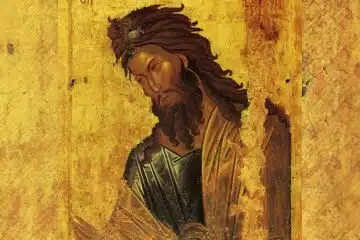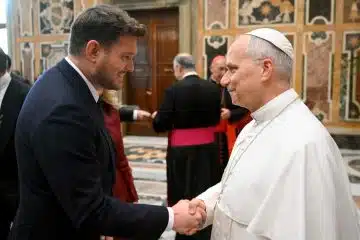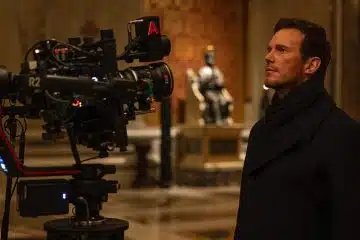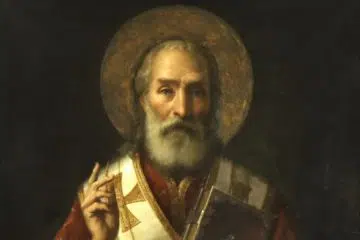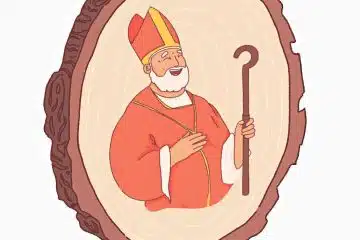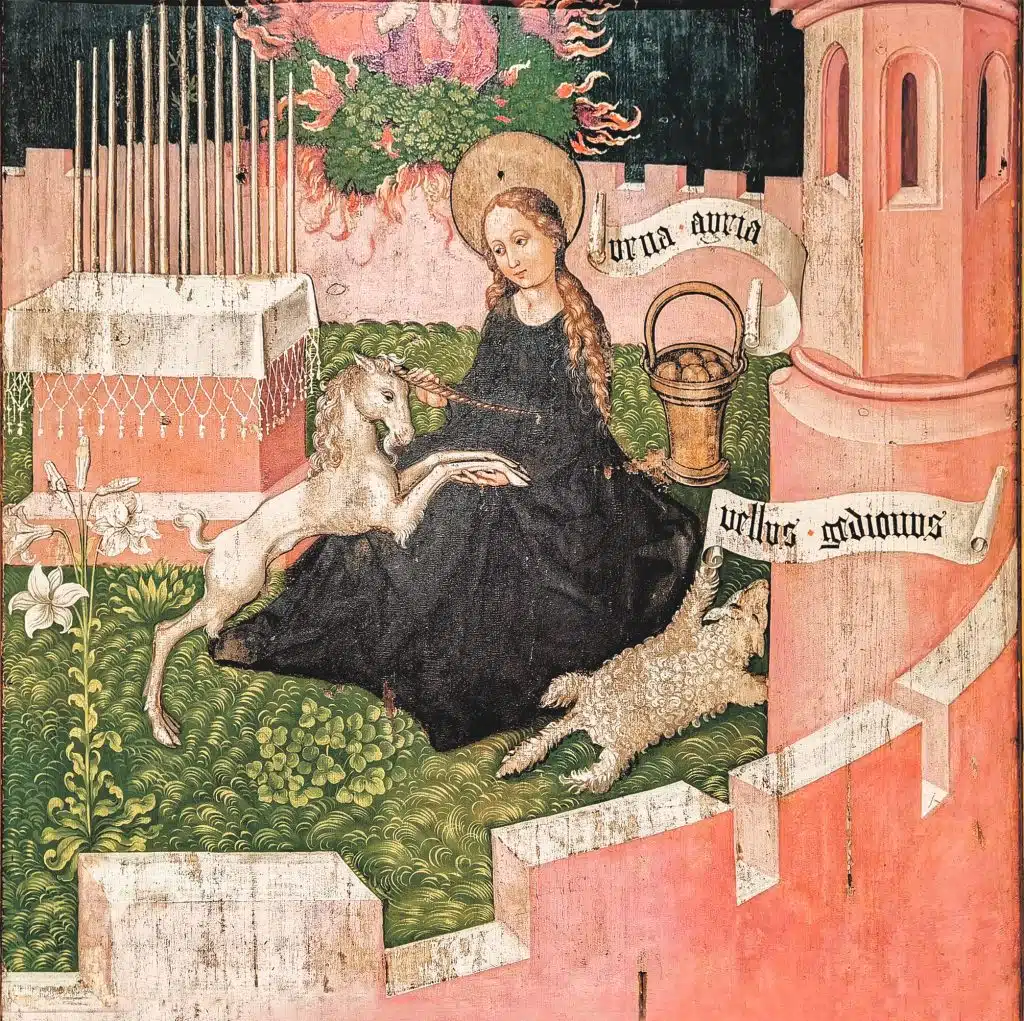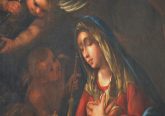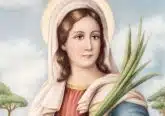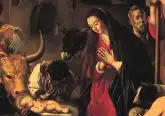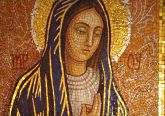The Unicorn and the Virgin’s “Yes”

In a visually saturated world, it’s easy to feel overwhelmed and become desensitized to beauty. Visio Divina, Latin for “divine seeing,” encourages us to slow down and engage in visual contemplation, using art as a profound tool for connecting with the Divine.
A Guide to Visio Divina
Begin by making the sign of the cross and inviting the Holy Spirit to guide your contemplation. Spend a moment meditating on Madonna in a Rose Garden (ca. 1480), painted by Martin Schongauer or a follower of his. This work, originally two panels of a Dominican altarpiece, is located at the Unterlinden Museum in Colmar, France. Then, read Luke 1:26-28.
Background
Painted around 1480, this work reflects the late-Gothic love of detail and symbolism. Among its many symbols, the most curious is the unicorn—an image with an ancient and far- traveling history. First recorded in classical antiquity and in accounts from first-century India, the unicorn’s legend spread across cultures as travelers passed along their embellished stories. Most often, it was described as a powerful, horse- like creature possessing a single long horn between its eyes. The horn was believed to hold healing properties, capable of purifying water, curing disease, and dispelling poison.
The unicorn was prized not only for these miraculous powers, but also because it was supposedly nearly impossible to capture—untameable by hunters and able to resist any chains. Legend held that hunters would try to capture the unicorn by presenting a virgin—for only in her presence would the creature approach, lay its head in her lap, and make itself vulnerable.
Even more curious, unicorns found their way into biblical translations. In the second century BC, Greek translators of the Hebrew Bible rendered the word re’em (wild ox) as monoceros (“one-horned”), likely influenced by classical folklore. Over time, such creatures—along with real and imagined animals and natural elements—began to be interpreted through a Christian-allegorical lens. To bring order to these interpretations, a book called the Physiologus (The Natural Historian) was compiled in the second or third century AD as a handbook for Christian symbolism. Its fifty entries described the natural properties of animals or natural elements alongside their spiritual and moral significance.
According to the Physiologus, the unicorn was said to be a small creature, resembling a kid goat, with a sharp horn protruding from its forehead. For early Christians, it came to symbolize Christ—wild and unconquerable, yet freely yielding to the Virgin Mary in the mystery of the Incarnation.
The allegorical tradition gained further weight in the fourth century when St. Jerome translated the same term, re’em, as unicornis, a choice that carried into the King James Bible in the 17th century. In the seventh century, St. Isidore of Seville (a Doctor of the Church) referenced the Physiologus in his Etymologies, reinforcing the unicorn’s role as a Christian symbol. Thus, a creature born of legend entered sacred scripture and gradually became a rich Christian motif woven throughout art and literature.
Enter In
The painting opens at dawn—the prime hour for hunting. The sky glows a deep blue as the sun climbs behind the mountain. Within the garden walls unfolds a scene that blends the classic unicorn hunt narrative with the Annunciation.
The archangel Gabriel enters the garden. He sounds his horn while four hunting dogs strain at his side. He is portrayed as the hunter. However, this is not a hunt in the usual sense. Rather, Gabriel leads the “chase” on God’s behalf, seeking out Mary and delivering the news.
From Gabriel’s horn, a scroll unfurls with the words, Ave Maria, gratia plena—“Hail Mary, full of grace.” From the dogs’ mouths, other scrolls unravel, inscribed with mercy, justice, peace, and truth—four divine attributes named in Psalm 85. Here, the virtues are personified through the hounds, and the painting reveals how, in the Incarnation, these divine gifts are fulfilled and made present.
Across the garden, the Virgin Mary sits serenely in the grass. The unicorn appears as a small, humble, goat-like creature (as described in the Physiologus) and surrenders completely to the Virgin, freely resting its head in her lap. Her calm demeanor and hand gestures show openness— she receives the unicorn or Christ freely, not by coercion, but by consent: “Let it be done unto me according to Your word” (Lk 1:38).
Apart from the unicorn hunt, the artist fills the garden with a fascinating array of symbols—or more specifically, typologies. A type (from the Greek word typos, meaning “figure” or “pattern”) is an element in the Old Testament that points to its fulfillment in the New Testament, its antitype.
Notice where the Annunciation unfolds—in a garden with castle-like walls surrounding it. These walls form a hortus conclusus, Latin for “enclosed garden,” drawn from Song of Songs 4:12: “You are a garden locked up, my sister, my bride; you are a spring enclosed, a sealed fountain.” The enclosed garden is a type of Mary, alluding to her purity. At the same time, the castle-like walls emphasize both her queenly status and the sacred protection of her virginity. Just left of the center stands a fountain, but its top is sealed shut and fastened with a lock. This is the “sealed fountain” mentioned in the Song of Songs verse—another image of Mary’s chasteness.
The rest of the types include the flowering rod of Aaron (Ex 4:2-4), the burning bush (Ex 3:1-6), the golden jar of manna (Ex 16; Heb 9:1-5), and Gideon’s fleece (Jgs 6:36- 40). All these types point to Mary and can be explored more deeply. I think the most compelling one is the image to Mary’s right; it looks like a golden vessel of bread which recalls the golden jar of manna kept in a tabernacle, the Ark of the Covenant (Ex 16; Heb 9:1-5). This type points to Mary as the New Ark—the Vessel who carries the Bread of Life.
Reflection
The Madonna in a Rose Garden is a strange, yet beautiful depiction of the Annunciation. Its unicorn allegory and Marian typologies invite us to linger, for every detail offers something new to discover.
I love the image of the unicorn here. Unlike the shining, majestic horse of folklore, here it appears as a small, goat– like creature—vulnerable yet brimming with mystery and power. In the same way, Christ entered this world not through grandeur but in humility, through the womb of the Virgin Mary.
Like the unicorn drawn to the Virgin, God was drawn to Mary’s purity. May we, too, embody the same purity of heart that allows room for Him to dwell in us.
As Pope St. John Paul II reminds us, Marian images and typologies help us understand the plan of salvation:
“They help us perceive the plan of salvation in Mary’s story; they convey to us a vital and indelible experience that is imprinted on our spirit, because they lead us from Mary’s beauty to the very author of truth and beauty, as the Book of Wisdom states: ‘From the greatness and beauty of created things, by analogy, the author is known’ (Wis 13:5)” (Pope John Paul II).
In other words, the beauty we see in Mary and in the symbols surrounding her is not an end in itself, but a reflection that leads us to Christ, the Author of all beauty.


